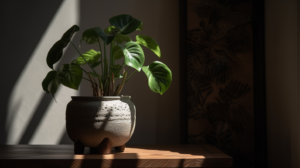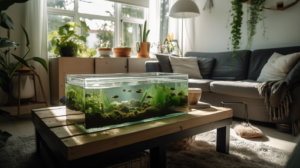How to Choose the Right Space for Your Indoor Garden
Discover the Perfect Spot
Creating a thriving indoor garden starts with choosing the right space for your plants. Proper placement ensures that your plants receive the necessary light, temperature, and humidity to grow and flourish. In this article, we’ll answer your questions about optimal interior garden placement and sun exposure for indoor gardens. We’ll also provide tips to help you make the most of your space for indoor garden success.
Finding the Optimal Interior Garden Placement
When selecting the perfect spot for your indoor garden, consider the following factors:
- Light: Assess the light conditions in your space and choose plants that will thrive in those conditions. Many indoor plants require bright, indirect light, while others can survive in low light. Pay attention to the direction of your windows and the amount of natural light they receive throughout the day.
- Temperature: Most indoor plants prefer temperatures between 65-75°F (18-24°C). Avoid placing plants near heating or cooling vents, as this may cause temperature fluctuations that can stress your plants.
- Humidity: Many indoor plants prefer higher humidity levels. You can increase humidity by misting plants, placing them near a humidifier, or grouping plants together. Bathrooms and kitchens often have higher humidity levels, making them suitable locations for humidity-loving plants.
- Space: Consider the amount of space you have available and the mature size of your plants. Allow adequate room for your plants to grow and ensure they have proper airflow to prevent the spread of pests and diseases.
Understanding Sun Exposure for Indoor Gardens
While some indoor plants require direct sunlight, most thrive in bright, indirect light. Direct sunlight can cause the leaves of some plants to scorch, while low light may lead to slow growth and poor overall health. It’s essential to research the specific light requirements of your plants and adjust their placement accordingly. If your space lacks sufficient natural light, consider supplementing with grow lights to provide the necessary light for your indoor garden.
Tips for Maximizing Your Space for Indoor Garden Success
- Utilize Vertical Space: Make use of shelves, hanging planters, and wall-mounted planters to grow your indoor garden vertically and maximize space.
- Choose Multipurpose Furniture: Opt for furniture pieces that double as plant stands or storage, such as ladder shelves or side tables with built-in plant holders.
- Rotate Your Plants: Regularly rotate your plants to ensure even light distribution and prevent them from leaning toward the light source.
- Group Plants by Light Requirements: Arrange your indoor garden by grouping plants with similar light needs together, making it easier to manage their care and placement.
By carefully choosing the right space for your indoor garden and considering factors such as light, temperature, and humidity, you can create a thriving indoor oasis that enhances your living space and well-being. Remember to research the specific needs of your plants and adjust their placement accordingly to ensure a healthy and flourishing indoor garden.
Space for Indoor Garden FAQs
1. Can I grow an indoor garden in a room with no windows?
While it’s challenging to grow an indoor garden in a room without windows, you can use artificial grow lights to provide the necessary light for your plants.
2. How much space do I need for an indoor garden?
3. Can I grow plants in my bathroom?
Yes, bathrooms can be suitable locations for indoor gardens, especially for humidity-loving plants. Ensure that your bathroom has enough light for the specific plants you choose and that there’s adequate space for them to grow without overcrowding.
4. Do all indoor plants need direct sunlight?
No, not all indoor plants need direct sunlight. In fact, most indoor plants prefer bright, indirect light. It’s essential to research the specific light requirements of your plants and adjust their placement accordingly.
5. What if I don't have enough natural light for my indoor garden?
If your space lacks sufficient natural light, you can supplement with artificial grow lights. These lights provide the necessary light spectrum for your plants to grow and can be adjusted to meet the specific needs of your indoor garden.
Related Articles


